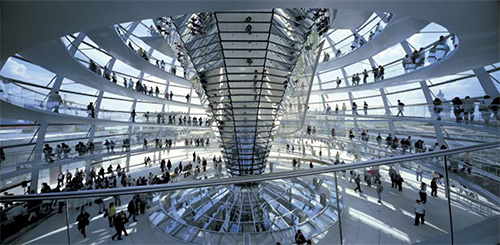The first large-scale exhibition in Japan to comprehensively survey Foster + Partners, THE INTERNATIONAL architecture and design STUDIO led by Norman Foster
Founded in 1967 by architect Norman Foster, Foster + Partners is an international architecture and design studio that has completed more than 300 projects in 45 countries around the globe.
They have created numerous contemporary architectural masterpieces that will be familiar to anyone who has travelled to the cities concerned, including the London headquarters of Swiss Re (known locally as The Gherkin) and the Reichstag, which houses the German parliament and has become a major tourist attraction in Berlin as the symbol of German reunification. As well, they are involved in a series of projects that could be said to epitomize innovation in architecture, including the new Apple Campus 2, and lunar habitations made from lunar soil using a robot-operated 3D printer. Throughout its history, Foster + Partners has consistently pursued such universal themes as "tradition and the future" and "humans and the environment" as they create architecture and cities based on innovative ideas.
"Architecture, Urbanism, Innovation" will be the first exhibition in Japan to comprehensively sur vey Foster + Partners' design activities over the last half century through a vast array of items including models, videos, furniture, computer graphics, products, plans and sketches focusing on around 50 representative projects.

Reichstag, New German Parliament 1992-1999 Berlin, Germany Photo: Rudi Meisel
Message From Lord Norman Foster
It is a pleasure to introduce our work in the exhibition of the Mori Art Museum. I would like to list some of the patterns that weave through our projects and have been constants since the birth of our studio nearly 50 years ago.
- A social agenda which is rooted in the belief that the quality of the design of our environment can improve the quality of our lives.
- Working with nature to reduce the energy demands of buildings and infrastructure, harvesting solar energy, using new and established technologies to do more with less.
- Pursuing innovation to reinvent such building types as airports, towers and workplaces.
- Encouraging the integration of art and architecture - of light and lightness.
- Embracing the past in regenerating historic structures with the presence of the new.
- Engaging with the city in creating and improving public spaces.
Many of these themes, especially sustainable design, are even more relevant now than they were in the past and they have the power to inform bold new initiatives for our future.
